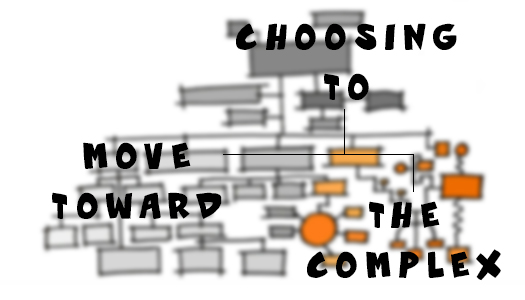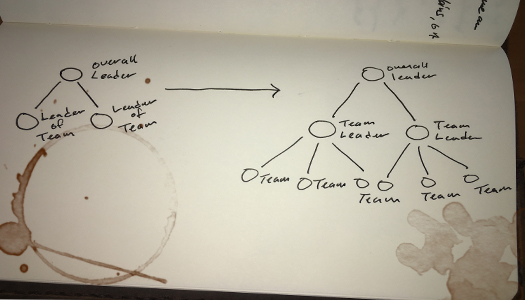
Jesus regularly asked questions. He did this as a way of teaching the disciples and to help them understand who He was. When Jesus asked questions it also helped those around Him to understand what was important to Him.
- What do you think about the Christ? Whose son is he? (Matthew 22:42)
- Which is greater: the gold, or the temple that makes the gold sacred? Which is greater: the gift, or the altar that makes the gift sacred? (Matthew 23:17-19)
- When I broke the five loaves for the five thousand, how many basketfuls of pieces did you pick up? (Mark 8:19)
Jesus’ ability to ask well crafted questions helped His followers to understand very deep and life changing spiritual lessons. As a leader, it is important to learn to ask the right questions, at the right time, to the right people. We call this evaluation. Questions help to accomplish various things in an organization but consider the following:
- Evaluation helps everyone on the team to define a “win.” In organizations there are as many definitions for “win” as there may be staff working for the organization. In church life you may have a staff, support staff, and volunteers who are all working for the church but they may all have a different expectations of success. If the church has a service on Sunday “WIN!” If there is a new family that ventures through the door “WIN” If there are no sound or audio/video issues “WIN!”
When you sit down and ask the hard questions then everyone is able to see what is important, just by what questions are asked. If the organization is not asking questions of evaluation, then that in itself speaks volumes. In sports, identifying a win is easy. Did we win the game? Anything else is a loss. Coaches and players are evaluated by how effective they are at putting points on the scoreboard and winning ball games.
In your organization, what is a “win?” Does this help you move toward something? Also, in sports each season is brand new. You get to start over. In church life, every year builds upon the previous one. There are no “mulligans.” Forward steps are made while pulling the weight of the church’s past. The first step in evaluation is to have an agreed upon “win” for whatever it is you are trying to evaluate. The older the church is, the more people have to be led to “this is a win”
- Evaluation helps to align budgets with expected outcomes. To continue our sports metaphor, there are agreed upon rules, set number of players, and basic needed equipment (balls, bats, helmets, shoulder pads, etc.). It is obvious when a sports team spends money on things that don’t help it to win, because their winning, scoring, etc. is affected (or their new scoreboard is the size of a small planet).
If a football team decides not to hire an offensive coordinator and let a volunteer handle it when they have time, then they may see the drastic effects of this decision on the first game of the season. So while the gold rims on the team’s bus may look nice, they will lose because they put the money in the wrong place (and they probably are getting horrible gas mileage).
If a new coach is hired (because the previous coach was not winning) and they have a losing season, it won’t be too long before he/she will be replaced. Why? Not because he was not a nice guy, or loved sports, but because he was not leading the team to win ball games. Churches have different definitions for success, but you can determine what they feel is important by where they put their money. Are you utilizing your resources to accomplish the win? Are you wasting precious resources on things that are not helping you to “win?”

- Evaluation helps one to better manage time. There is the famous illustration of the college professor who displays an empty jar and has several large rocks that he then places in the jar. He then asks the class, “Is the jar full?” They say, “yes.” The professor then gets out pebble sized small stones and pours them over the larger stones. He then asks, “Is it full?” They say, “yes.” He then pulls out sand, etc. you get the idea. Evaluation helps us identify what are the large stones, the most important things in ones’ life. Those large stones have to go in first, they won’t fit if you have already put the pebbles, sand, etc. in first. Evaluation asks, “What are the large stones and are they getting into my life first?”
I would argue that the most precious resource that you have is your time. If you want to get more out of your day, or accomplish those big goals you have set, then they have to be prioritized, they won’t fit once you have dealt with the constant urgency of the present. Evaluating helps the leader show where he/she feels time should be spent by the organization. Asking, “What is consuming most of our time?” and “is it being effective in helping us accomplish the win?” is incredibly important. What are the “big rocks?” and are we delegating/prioritizing the needed time to see that they are getting done?
- Evaluation helps to clarify mission. If everyone in an organization has a different definition of a “win,” then leaders will budget and calendar with their definition in mind. This difference leads to different goals relating to different missions and values within the same organization.
This leads to an “every man for themselves” mentality. If you need something then you compete for resources and personnel against other staff or leaders who are trying to accomplish their own mission. When you evaluate and ask the hard questions then resources are directed toward a common direction. Calendars are aligned to accomplish the same things. Mission begins to be clarified among the organization because the win has been defined and questions are being asked to determine if what you are doing is being effective at accomplishing it.
Luke 14:28-30 “For which of you, desiring to build a tower, does not first sit down and count the cost, whether he has enough to complete it? 29 Otherwise, when he has laid a foundation and is not able to finish, all who see it begin to mock him, 30 saying, ‘This man began to build and was not able to finish.” (ESV)
______________
Click here to read more articles written by Drew relating to asking questions and evaluation.
 This past Tuesday evening was a Cub Scout meeting. As the leader of my son’s age group we were continuing to go through first aid requirements for a rank advancement. We had to move a couple of times because the church where we meet is having some construction, but eventually we settled in the front of the church sitting on the grass. That evening we had a couple of new scouts that were supposed to be in the older group (they had met off campus that evening and they did not get the word so they sat in with us). So with new faces and beginning a little behind our normal schedule I started to work through my presentation.
This past Tuesday evening was a Cub Scout meeting. As the leader of my son’s age group we were continuing to go through first aid requirements for a rank advancement. We had to move a couple of times because the church where we meet is having some construction, but eventually we settled in the front of the church sitting on the grass. That evening we had a couple of new scouts that were supposed to be in the older group (they had met off campus that evening and they did not get the word so they sat in with us). So with new faces and beginning a little behind our normal schedule I started to work through my presentation. This past summer we had our largest Vacation Bible School and this past weekend we wrapped up our largest Fall Festival in decades for the church. In both of these instances we had a follow up meeting with those who helped lead these ministries and outreach efforts. In both cases we came to the same conclusion/agreement – we have to move from individual leader/s to teams. This transition marks a very important change in the church culture (at least in the children’s ministry).
This past summer we had our largest Vacation Bible School and this past weekend we wrapped up our largest Fall Festival in decades for the church. In both of these instances we had a follow up meeting with those who helped lead these ministries and outreach efforts. In both cases we came to the same conclusion/agreement – we have to move from individual leader/s to teams. This transition marks a very important change in the church culture (at least in the children’s ministry).
 Mankind loves a good story. When it is told in an engaging way it allows the hearers to let go of reality and believe what they know is a deception. They cry for characters when they experience tragedy or lost love, and rejoice for them when the character experiences the happy ever after. They allow themselves to go on a journey, a roller-coaster-ride of emotions, all while knowing what they are hearing and seeing if false, fictional, or took place in a far away place or distant time.
Mankind loves a good story. When it is told in an engaging way it allows the hearers to let go of reality and believe what they know is a deception. They cry for characters when they experience tragedy or lost love, and rejoice for them when the character experiences the happy ever after. They allow themselves to go on a journey, a roller-coaster-ride of emotions, all while knowing what they are hearing and seeing if false, fictional, or took place in a far away place or distant time. As I drive up into my driveway I see them. They cry out as they reach for the sky. I know the longer I put it off the more the machine will struggle to bring them back down to size. The weekday evenings are filled with activity and shuttling children to one activity to the next. While we hurriedly pull in and then reverse back out – there they remain, taunting me.
As I drive up into my driveway I see them. They cry out as they reach for the sky. I know the longer I put it off the more the machine will struggle to bring them back down to size. The weekday evenings are filled with activity and shuttling children to one activity to the next. While we hurriedly pull in and then reverse back out – there they remain, taunting me. _______________________________
_______________________________